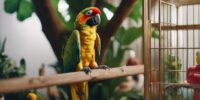What Are the Rare and Unusual Color Varieties in Budgerigars (Budgies)?
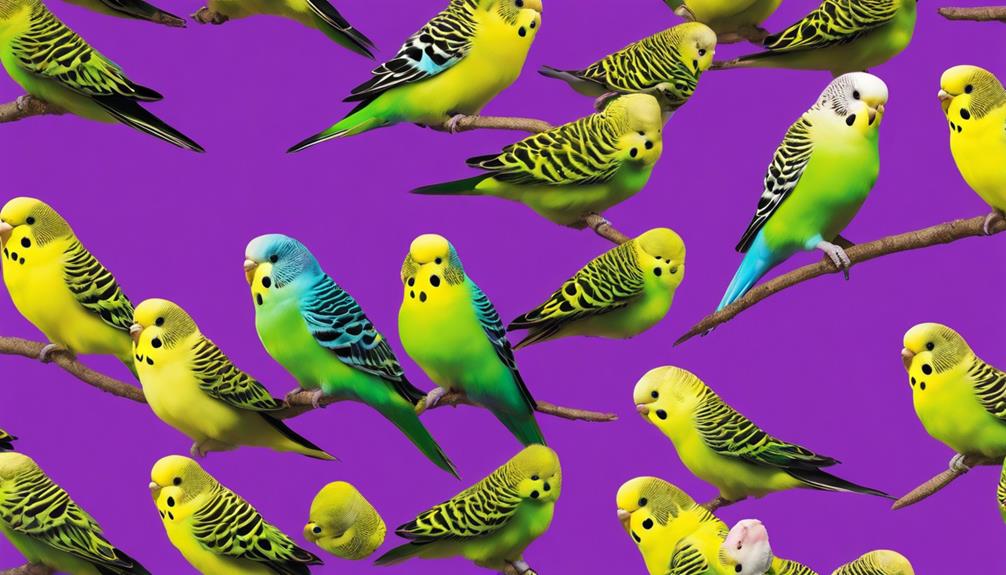
Budgerigars, also known as budgies, are popular pet birds known for their bright and colorful plumage. While traditional color varieties such as blue, green, and yellow are common, there exist rare and unusual color variations that showcase the extensive genetic diversity within the species. These unique color mutations result in budgies with striking and unconventional hues, captivating bird enthusiasts and breeders alike. From vibrant violet to stunning cinnamon, exploring the spectrum of genetic diversity in budgerigars reveals a kaleidoscope of colors that adds a new dimension to the world of aviculture.
Understanding the genetic basis of these rare color varieties not only enhances our appreciation for the beauty of budgerigars but also provides valuable insights into the mechanisms of color inheritance and expression in birds. By studying these unique mutations and their inheritance patterns, researchers and breeders can uncover the underlying genetic pathways that govern color diversity in budgerigars. This knowledge not only aids in the responsible breeding practices aimed at preserving and promoting rare color varieties but also contributes to the broader field of avian genetics. As we delve deeper into the genetic tapestry of budgerigars, we unravel the mysteries of their colorful plumage and uncover a world of beauty waiting to be explored.
Opaline Mutation
The Opaline mutation in budgerigars results in a distinct feather coloration pattern that sets individuals with this genetic variation apart from their wild-type counterparts. When examining opaline genetics, one can observe that this mutation affects the distribution of melanin in the feathers, leading to a unique appearance. Opaline budgerigars display a soft, pastel-like coloration compared to the vibrant hues seen in wild-type birds. This coloration is characterized by a reduction in the intensity of pigmentation, giving the feathers a diluted and somewhat translucent quality.
Furthermore, opaline budgerigars exhibit a blending of colors along the feather shafts, creating a gradient effect that isn't typically seen in wild-type birds. The opaline coloration characteristics are particularly striking under natural light, where the soft hues shimmer and reflect in a mesmerizing manner. Understanding opaline genetics can provide valuable insights into the mechanisms that govern feather pigmentation and patterning in budgerigars, contributing to the overall fascination with these unique and beautiful birds.
Greywing Variety
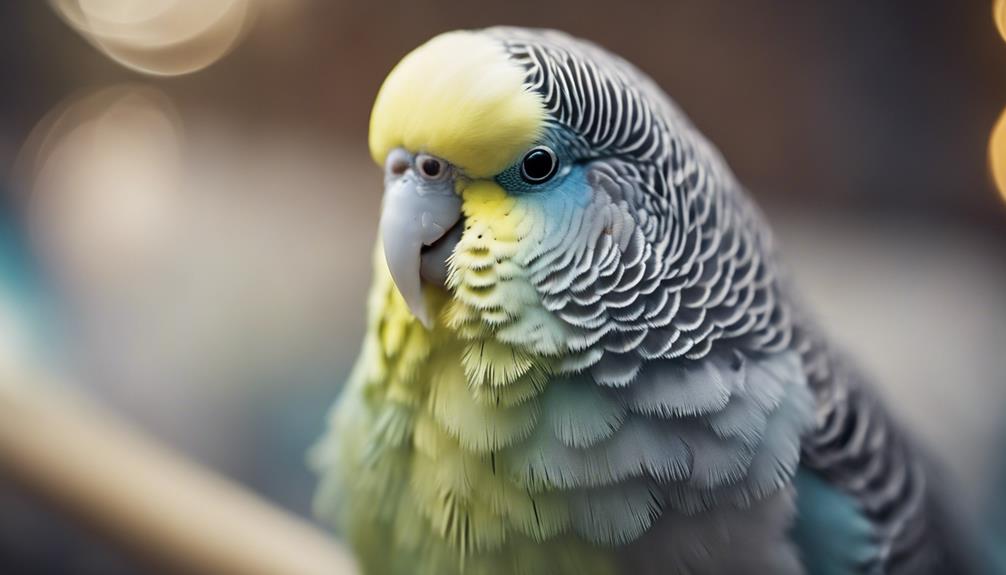
With its distinctive feather coloration pattern, the Greywing variety in budgerigars showcases a unique genetic trait that sets it apart from other color mutations. Greywing genetics involve a mutation that dilutes the color of the body feathers while retaining the intensity of the wing color. This results in a bird with soft, pastel body coloration and vibrant, richly colored wings, creating a striking visual contrast.
In Greywing budgerigars, the feather patterns exhibit a washed-out appearance compared to the standard color variations. The body color can range from a light grey to a pale yellow, while the wings maintain their original hues, making the Greywing mutation highly sought after by bird enthusiasts for its unique and aesthetically pleasing look.
When breeding Greywings, it's essential to understand the genetic inheritance patterns to produce consistent color variations. By selectively pairing Greywings with appropriate mates, breeders can enhance and stabilize the Greywing mutation in subsequent generations, ensuring the continuation of this beautiful color variety in budgerigars.
Spangle Mutation
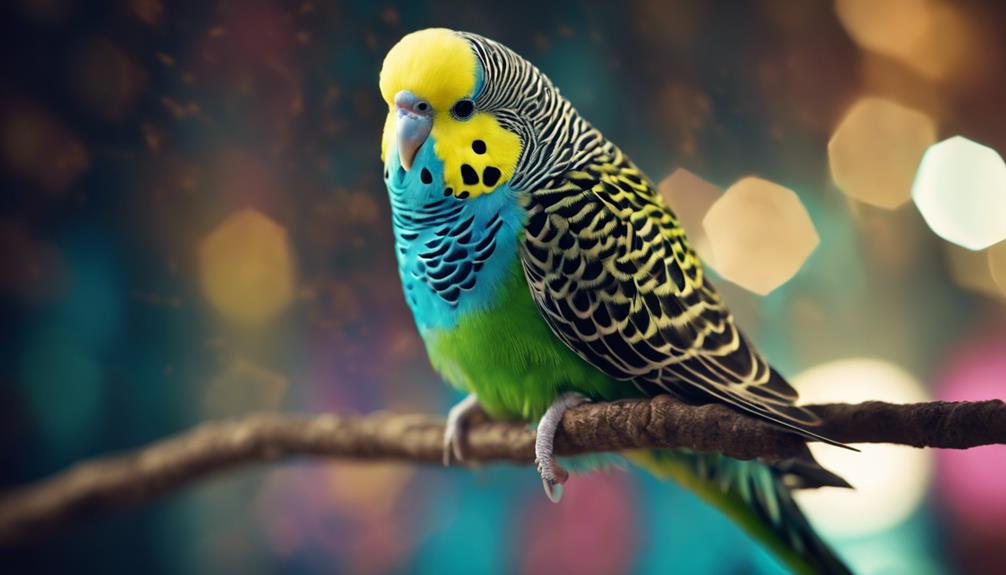
The Spangle mutation in budgerigars presents a unique color pattern characterized by clear, defined markings on the feathers. Breeders employ specific techniques to enhance and propagate this distinctive trait within their budgerigar populations.
Understanding the genetic inheritance of the Spangle mutation is crucial for effectively breeding these rare and attractive birds.
Spangle Color Pattern
Displaying a striking and distinctive color arrangement, the Spangle color pattern in budgerigars results from a unique mutation affecting the distribution of pigmentation on their feathers. This mutation leads to a captivating pattern where the center of each feather lacks pigmentation, creating a clear area in the middle, with the color concentrated at the edges. Understanding the Spangle color pattern involves delving into specific genetics that dictate the unique combinations seen in these birds.
Breeders often work with Spangle color mutations to predict breeding outcomes and produce birds with desired visual traits. The Spangle mutation offers enthusiasts a fascinating glimpse into the intricate world of budgerigar genetics and color variations.
- Spangle color pattern: Distinctive lack of pigmentation in feather centers.
- Spangle color genetics: Dictates unique color combinations.
- Breeding outcomes: Predicting visual traits through Spangle mutations.
Spangle Breeding Techniques
Exploring advanced breeding techniques for the Spangle mutation in budgerigars reveals intricate methods to enhance and propagate this unique color pattern. Color genetics play a crucial role in Spangle color development, influencing the outcome of breeding strategies.
Breeders focus on genetic selection to produce vibrant and well-defined Spangle patterns. By selectively pairing budgerigars with desirable Spangle traits, breeders aim to amplify the expression of this mutation in subsequent generations.
Understanding the genetic mechanisms behind Spangle color inheritance is essential for successful breeding programs. Through careful planning and controlled matings, breeders can work towards refining and stabilizing the Spangle color variation in budgerigars, contributing to the diversity of rare and unusual color varieties within the species.
Spangle Genetic Inheritance
Genetic inheritance of the Spangle mutation in budgerigars follows a complex pattern determined by specific gene interactions. This mutation affects the distribution of color in the feathers, creating a striking pattern that distinguishes Spangles from other color varieties. Understanding the genetic diversity underlying the Spangle mutation is crucial for breeders looking to produce these unique budgerigars.
- Incomplete Dominance: The Spangle mutation exhibits incomplete dominance, meaning that the visual outcome in the offspring is a blend of the Spangle and wild-type coloration.
- Sex-Linked Inheritance: Spangle is a sex-linked mutation, with different inheritance patterns in male and female budgerigars.
- Gene Interactions: Multiple genes interact to produce the Spangle phenotype, adding to the complexity of its inheritance.
Clearwing Variety
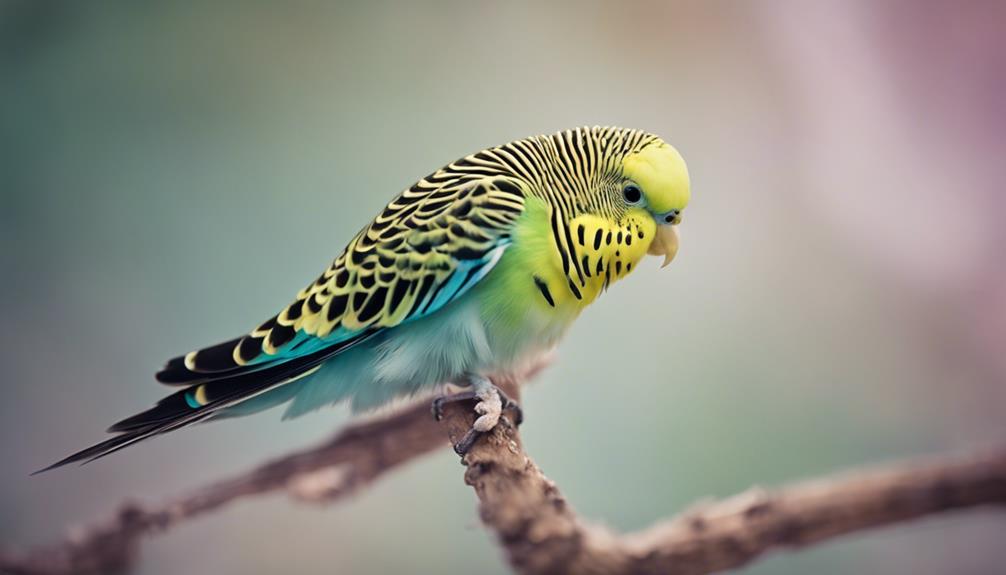
The Clearwing variety in budgerigars is characterized by a distinct gene origin that influences the unique feather patterns seen in these birds.
These birds present challenges for breeders due to the specific breeding goals required to maintain the purity of the Clearwing variety.
Understanding the genetic intricacies behind the Clearwing variety is essential for successful breeding programs aimed at preserving this rare and unusual color variety in budgerigars.
Clearwing Gene Origin
Originating from a unique genetic mutation, the Clearwing variety in budgerigars showcases a striking departure from the typical color patterns seen in this species. The Clearwing gene origin provides insights into the fascinating world of budgerigar genetics and breeding practices.
- Genetic Origins: The Clearwing mutation is caused by a recessive gene that alters the distribution of melanin in the feathers, resulting in a diluted body color and reduced markings.
- Breeding Challenges: Breeders must carefully select compatible pairs to produce Clearwing offspring due to the recessive nature of the gene and ensure the preservation of this unique variety.
- Color Variations: Clearwings display soft, pastel hues with a clear body color and distinct flight feathers, creating a beautiful and distinct appearance in budgerigars.
Unique Feather Patterns
How do the unique feather patterns of the Clearwing variety distinguish it from other budgerigar color varieties?
The Clearwing budgerigar exhibits distinctive features with a body color that's diluted as a result of the gene mutation. The wing markings of Clearwings are notably different from other varieties, showcasing clear, unbroken markings on the wing flights and a lighter body color. These unique markings create a striking contrast that sets Clearwings apart from more common budgerigar varieties.
Breeders often seek out Clearwings for their rarity and the challenge of achieving specific combinations of clear markings and body colors. The Clearwing variety offers enthusiasts an opportunity to appreciate the beauty of these birds through their rare combinations of colors and markings.
Breeding Challenges and Goals
Distinctive breeding challenges arise when striving to maintain the unique color patterns and markings of Clearwing budgerigars, presenting enthusiasts with specific goals to achieve in their breeding programs.
Key Points:
- Color Genetics: Understanding the intricate color genetics involved in Clearwing budgerigars is crucial for successful breeding outcomes.
- Selective Breeding: Implementing selective breeding practices to preserve and enhance the Clearwing variety's distinct characteristics is essential.
- Challenges and Breeding Standards: Overcoming obstacles such as color dilution and maintaining breeding standards are paramount in producing high-quality Clearwing budgerigars.
Cinnamon Mutation
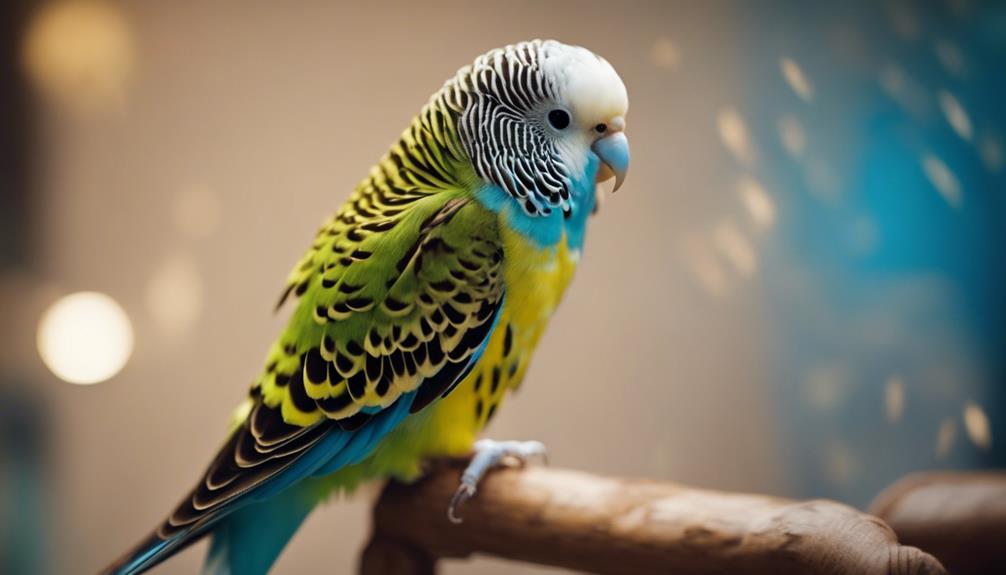
The Cinnamon mutation in budgerigars results in a unique and distinctive coloration that sets it apart from the more common varieties. This mutation is governed by specific genetics that lead to intriguing color variations in budgies. The Cinnamon budgerigar showcases a warm, earthy brown color spread across its feathers, giving it a cinnamon-like appearance. When bred strategically, the Cinnamon mutation can produce rare combinations with other color mutations, creating visually stunning birds.
In Cinnamon genetics, the mutation affects the distribution of melanin pigments, resulting in a diluted eumelanin pigment that manifests as the characteristic brown hue in budgies. Breeders interested in developing Cinnamon varieties often employ specific breeding strategies to enhance and refine this coloration. By carefully selecting parent birds with Cinnamon genes and considering rare combinations with other mutations, breeders can produce exceptional Cinnamon budgerigars with distinct and captivating appearances.
Understanding the intricacies of Cinnamon genetics and implementing targeted breeding approaches are crucial for successfully breeding and showcasing these unique color varieties in the world of budgerigars.
Lacewing Variety
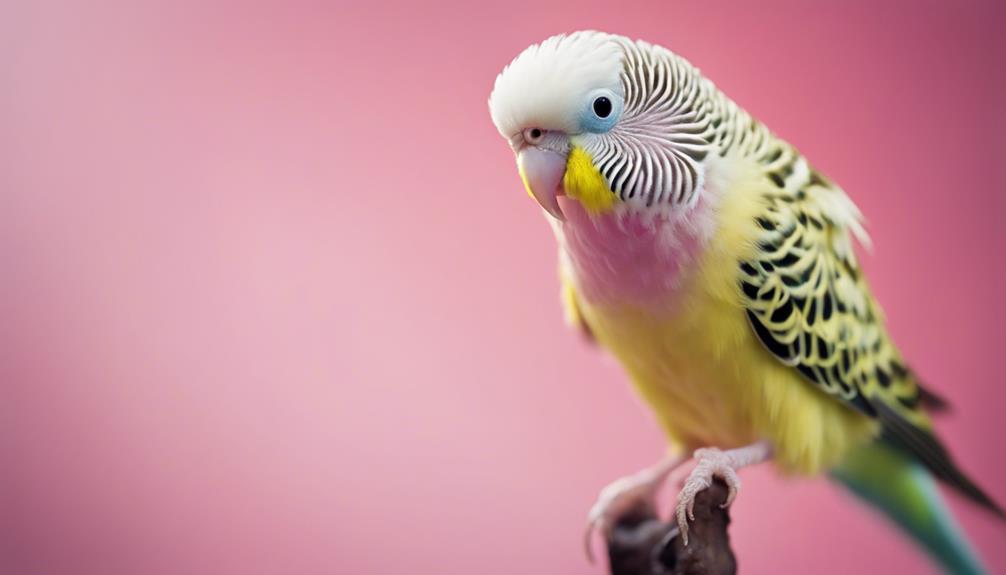
The Lacewing variety in budgerigars exhibits a striking and intricate combination of colors that differentiate it from other common mutations. This mutation is characterized by its unique feather coloration, which results from specific genetic factors influencing the distribution of pigments in the bird's plumage.
Here are three key aspects that make the Lacewing variety a fascinating subject for enthusiasts:
- Feather Coloration: The Lacewing budgerigar displays a beautiful blend of creamy yellow and white feathers, creating a soft and delicate appearance that sets it apart from other color mutations.
- Genetic Factors: The development of the Lacewing variety involves complex genetic interactions that influence the expression of pigments, making it a sought-after mutation among breeders for its rarity and distinctiveness.
- Breeding Challenges: Due to the intricate genetic makeup of Lacewings, breeders may encounter challenges in consistently producing birds with the desired coloration and unique markings, adding an element of excitement and difficulty to breeding programs aimed at maintaining this mutation's purity and beauty.
Dark-Eyed Clear Mutation
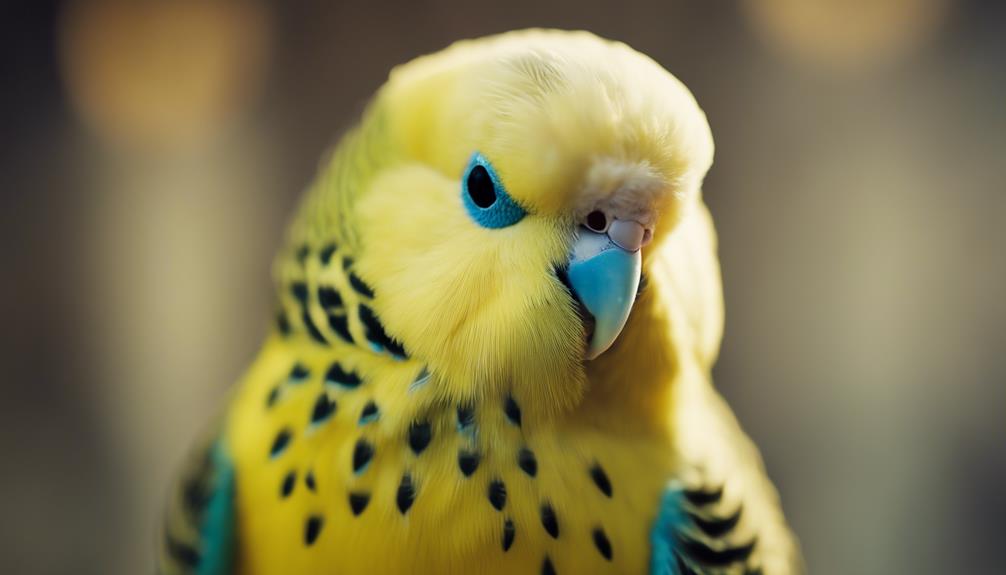
Displaying a unique blend of colors, the Dark-Eyed Clear mutation in budgerigars showcases a striking alteration in feather pigmentation. This mutation is a result of specific genetic variations that impact the bird's coloration. The Dark-Eyed Clear budgie has a transparent or clear body color, which allows the dark color of the eyes to stand out prominently. This creates a captivating visual contrast that sets this mutation apart from others. Breeders interested in producing Dark-Eyed Clear budgerigars must carefully select and pair parent birds with the appropriate genetic makeup to achieve this desired color variation successfully.
| Dark-Eyed Clear Mutation |
|---|
| Clear body color |
| Dark eye color |
| Genetic mutation |
| Breeding requirements |
| Striking appearance |
Frequently Asked Questions
Are There Any Other Color Mutations in Budgerigars Besides the Ones Mentioned in the Article?
There are indeed other color mutations in budgerigars beyond those mentioned. Through genetic inheritance and selective breeding techniques, breeders have developed various rare and unusual color varieties in these birds, contributing to conservation efforts and wild populations.
How Do Breeders Ensure the Purity of These Rare Color Varieties in Budgerigars?
Breeders ensure the purity of rare color varieties in budgerigars through meticulous breeding techniques and genetic testing. By following color inheritance patterns and breeding standards, they maintain the integrity of these unique color mutations.
Can These Rare Color Varieties Be Found in the Wild or Are They Only Bred in Captivity?
In the wild, rare color varieties of budgerigars are uncommon due to natural selection. Breeding programs focus on maintaining genetic diversity and preserving these varieties. Conservation efforts play a crucial role in safeguarding these unique traits for future generations.
Do These Color Mutations Affect the Health or Behavior of Budgerigars in Any Way?
Color mutations in budgerigars, while fascinating, do not usually impact their health or behavior. Genetic implications influence their appearance, not their well-being. Studies on avian health and behavior show color psychology plays a minimal role in budgerigar welfare.
Are There Any Specific Care Requirements for Budgerigars With These Rare Color Varieties?
When caring for budgerigars with rare color varieties, specific attention must be given to their diet requirements, grooming techniques, housing needs, and exercise routines. These factors play a crucial role in maintaining the health and well-being of these unique birds.



